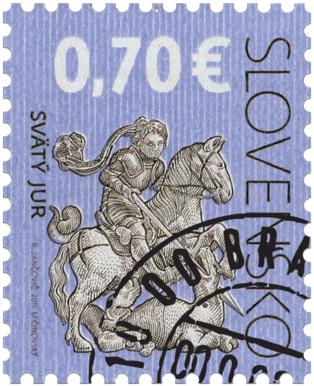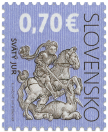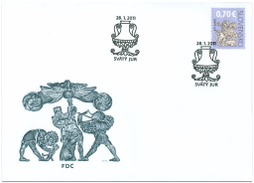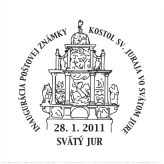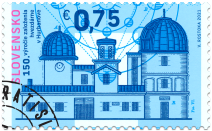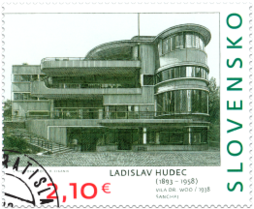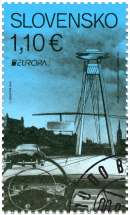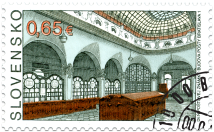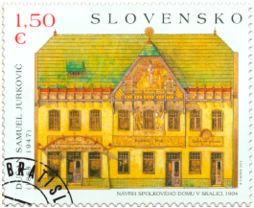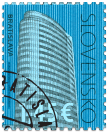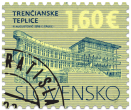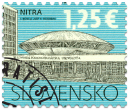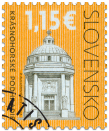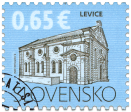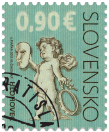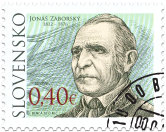490 Date of issue
28.01.2011 Face value
0.70 € Sell price
0.35 €
The stone Altar of St. George in Svätý Jur near Bratislava takes a prominent place among the works of art between Gothic and Renaissance period. Taking into account its technique – full craftsmanship in fine limestone – this altar is a unique work in Slovakia. Its artistic quality is exceptional as well, since it responds to current stimuli of the Central European art.
The centre of altar architecture, basically divided into four horizontal registers, is the figure of St. George – who is a knight on horseback, with spear, killing the dragon under the horse’s hooves. Sculpture, almost in the form of free equestrian statue, is in the background completed by the relief of the landscape scenery, while garlands over it create a natural canopy. This décor is crowned by smaller scenes on the sides – on the wings of the altar, with four scenes from the life of the titular saint.
In the dividing part, the groups of the Christ's Birth and Escape to Egypt are located; while in the middle there was originally the Adoration of the Magi, now preserved outside the altar. The gable over the main stage is dominated by spectacle of St. George in conversation with the Emperor; at the very top there is the Passion of St. Sebastian. Its motif, situated in the semi-circular medallion at the top of the altar, is the drawing on FDC. Apart from the rich Renaissance decoration, the parts of the altar are made of several loose sculptures on both sides, usually more in the Gothic style. Such stylistic ambiguity is typical for the period around 1500 and on the altar in Svätý Jur it may be explained also by the participation of at least three relatively autonomous sculptors.
With regard to the afore-mentioned uniqueness, it is obvious that the altar was imported in blocks from outside Slovakia, or medieval Hungary. The closest stylistic affinities lead to nearby Vienna, where one can find the analogy with the so-called Altar of St. Anna (1512), however according to recent research, its masters drew inspiration from a much wider area of the Danube (Salzburg, Passau). It must be mentioned that since the Middle Ages the art in Bratislava and its surroundings was determined by the importance of the Danube trade route, and particularly by the vicinity of Vienna, in the early 16th century – the imperial metropolis.
Dušan Buran
© 2024 POFIS - Postal philatelic service. All rights reserved

